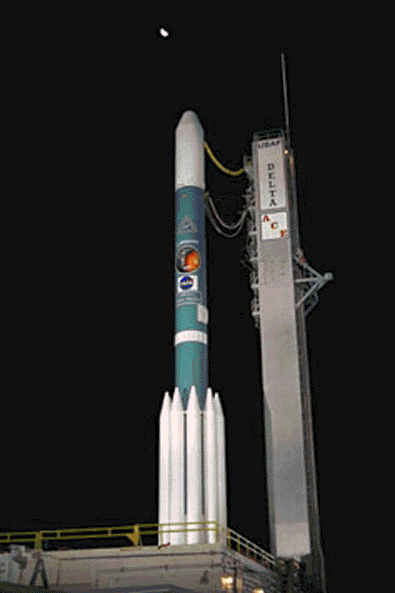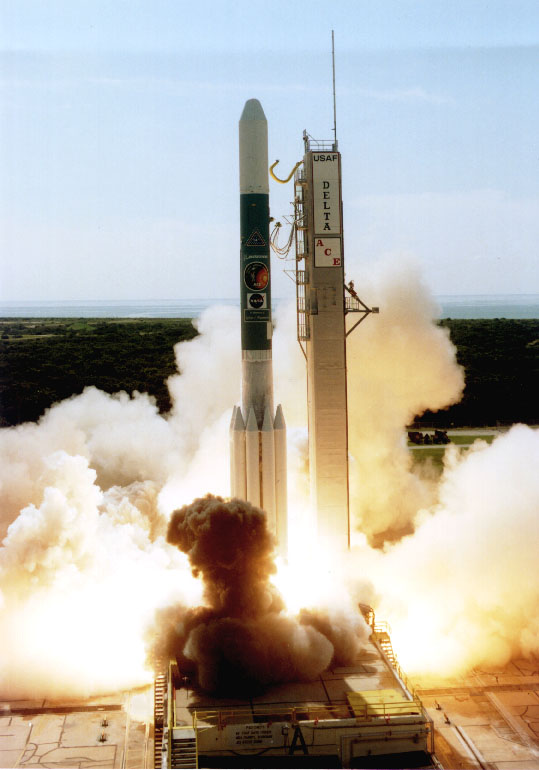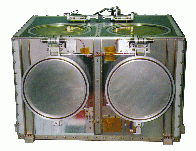Changes in the Sun’s output of visible light, invisible electromagnetic radiation, solar wind (ions), and solar energetic particles (SEPs), is collectively classified as solar activity. A large percentage of the particles which travel toward Earth from the Sun are in the plasma state. These charged ions are the main constituent of the solar wind. These moving ions have small magnetic fields surrounding them just like all moving electrical charges. One of the main topics that is of interest to scientists is the interaction of the magnetic field generated by these ions with the Earth’s magnetosphere (magnetic field). This interaction is rather complicated. The particles approach the magnetosphere causing it to be distorted slightly. The slight distortion, in turn, causes the flow of the the magnetic field lines are the “highways in the sky” for these charged particles. The magnetic field lines of the magnetosphere become a highway because charged particles tend to flow along magnetic field lines. The net result is that the Earth’s magnetosphere normally protects us from the stream of high energy particles in this way.
The composition of the solar wind can be altered by solar flares, coronal mass ejections (CMEs), and solar plumes. The solar flares are tremendous explosions in the Sun’s atmosphere. These explosions are believed to result from the rapid release of energy stored in the magnetic fields around sunspots (darker and cooler areas on the Sun’s surface created by expanding loops of plasma). These solar flares result in the acceleration of ions of elements such as carbon, nitrogen, oxygen, neon, magnesium, silicon, and iron. These accelerated particles are called solar energetic particles (SEPs) and are classified as solar cosmic rays. The largest solar flares are normally associated with coronal mass ejections (CMEs). These CMEs are tremendous ejections of mass from the Sun. These ejections expand as they climb and heat the solar plasma to tens of millions of degrees. These CMEs eventually accelerate electrons, protons, and heavy nuclei to velocities approaching the speed of light. The solar plumes are feathery jets that extend from near the poles to more than 13 million miles into space. These plumes may be the the origin of the high speed solar wind particles since they expel high-speed streams of plasma (that can reach one million degrees) from the corona.
The interaction of the the various solar events with each other creates a very complicated system. The frequency of solar activity generally follows the well-documented eleven-year solar activity cycle. At their peak they number several tens of flares per day. The CMEs occur only a few times during the period of maximum solar activity.


Glossary:
ACE - (Advanced Composition Explorer) NASA spacecraft launched in August of 1997 with the purpose of sampling the matter that comes near the Earth from the Sun, the space between the planets, and the Milky Way galaxy beyond the solar system
acronym - a word formed from the initial letter(s) of each successive part of a phrase
alpha particle - positively charged particle consisting of two protons and two neutrons
anomalous cosmic rays (ACRs) - ions that are tossed around in and out of the solar wind termination shock (the shock caused by the sudden slowing of solar wind as it approaches the heliopause) until some gain energy and are thrown back inside the heliosphere
atomic number - represented by Z, equals the number of protons in the nucleus of an atom
cosmic rays - particles and high-energy light that bombard the Earth from anywhere beyond its atmosphere
coronal mass ejections (CMEs) - huge ejections of mass from the Sun; they are balloon- shaped bursts of solar wind rising above the solar corona, expanding as they climb; solar plasma is heated to tens of millions of degrees, and electrons, protons, and heavy nuclei are accelerated to near the speed of light
electron - negatively charged particle, one of the three major building blocks for atoms
electron volt - the energy acquired by an electron as a result of moving through a potential
difference of 1 volt
flux - measurement which describes the rate of particle flow
galactic cosmic rays (GCRs) - cosmic ray particles that come from outside our solar system, but from within our galaxy; they have lost all of their electrons during their trip through the galaxy
ions - an atom that carries a positive or negative electrical charge as a result of having lost or gained one or more electrons
interstellar medium - the seemingly empty space between stars that is actually composed of particles from a variety of sources
isotopes - different forms of an element (depending on the number of neutrons)
kiloelectron volt (keV) - unit of electrical energy equivalent to 1000 electron volts
logarithmic scale - a scale based on the fact that powers or exponents of base numbers are added when multiplying and subtracted when dividing, (math functions that range over a broad scale of magnitudes are usually graphed with a logarithmic axis)
magnetic field - a region of space near a magnetized body or electrical current where magnetic forces can be detected
magnetometer - instrument designed to measure magnetic field strength and/ or direction
mass spectrometer - instrument designed to measure the mass of atomic and subatomic particles
megaelectron volt (MeV) - unit of electrical energy equivalent to one million electron volts
plasma - a fourth state of matter-- not a solid, liquid, or gas; in a plasma, the electrons are pulled free from the atoms and can move independently; the individual atoms are charged, even though the total number of positive and negative charges is equal, maintaining overall electrical neutrality
proton - positively charged particle, one of the three major building blocks for atoms, the
number of protons found in an atom’s nucleus determines what element is present
solar energetic particles (SEPs) - are atoms that are associated with solar flares; SEPs
are a type of cosmic ray that move away from the Sun due to plasma heating, acceleration, and numerous other forces; on the scale of cosmic radiation, SEPs have relatively low energies
solar flare - enormous explosion of gas in the solar atmosphere resulting in: a sudden acceleration of particles, the heating of plasma, and the eruption of large amounts of solar mass
solar plumes - feathery jets that extend from near the poles of the Sun to more than 13 million miles into space
solar wind - the plasma of charged particles(protons, electrons, and heavier ionized atoms)
coming out of the Sun in all directions
universal time (UT) - method of measuring time referenced to Greenwich, England; the time
is kept using a zero to 24 hour scale with zero equaling midnight; also known as
Greenwich Mean Time (GMT), or Zulu time
